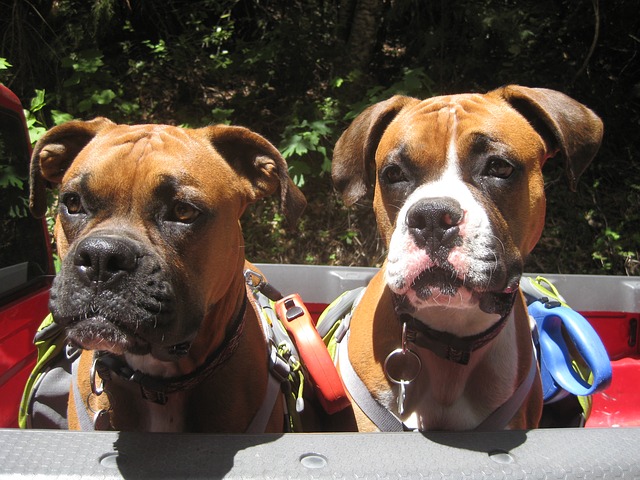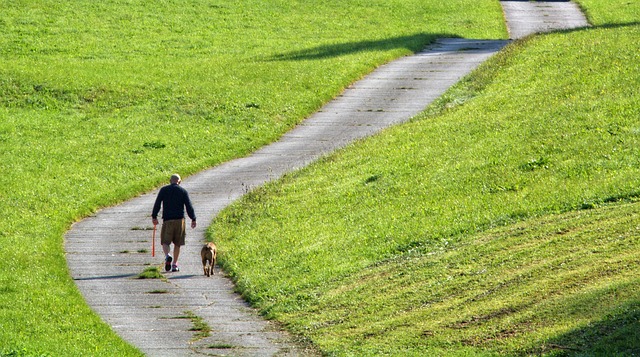We have always said that, although it can be done alone, hiking is best enjoyed when we go with partners. And one of those who will undoubtedly enjoy it is our dogs: they love to walk outdoors just like us, so there is no reason for leaving them at home.
They will surely be grateful: new smells, new places and much to explore. However, there are some precautions that we should take into account when hiking with our four legged friend. And precisely because of this, from Walkaholic we advise you on this particular.
Contents
Do you carry a dog? Plan the route
Step number one: make sure the place where you are going is pet friendly. In some natural parks it is prohibited.

With the wolf domestication and the appearance of many breeds of dogs, yours may not be for high intensity exercises. For example, those who have brachycephalic syndrome (breathe hoarse and deep) do not tolerate hiking too well.
Nor are all routes recommended for dogs. Thus, if you are going to practice high mountain trekking, suspension bridges, railways or steep terrain or climbing, it is better that our pet does not go with us. It is best to select a route with forest tracks or grass, so that its legs are not damaged. If they include streams or lakes, then better: dogs love to play with water.
Also, is not advisable to subject them to very long routes or take a long time to travel them, and always check that there is not excessive heat or too much rain. Also remember that rocky, icy, or paved terrain can hurt his leg pads. If necessary, your dog can wear dog trekking boots to protect his legs. Of course, he should get used to using them at home first.
It is also not advisable to take those that are very small or very old (over 8 years), those of large sizes or with a lot of hair, as they may suffer a heat stroke on the route. Remember that by their faithful character they will follow us where we take them, even putting their own health at risk. Do not abuse of his loyalty.
Extra weight in the backpack

If you take your dog for a walk on a hiking trail, keep in mind that you should take what he needs along the way. You can choose to buy a backpack for dogs that is suitable to carry it: if the weight it carries does not exceed 25% of the weight of your pet, then there are no problems and it can be a relief for your backpack.
Keep in mind the medic kit. Most likely, you already have a disinfectant for wounds and bandages, but if your pet requires any special medication, don’t forget to include it. You should also carry bags to collect your dog droppings: be responsible and keep the trail clean for other people.
Your dog will need water and food, so don’t forget to pack what is necessary for both. Remember to let him rest for a while before and after eating, to prevent a gastric torsion from the exercise.
About the water, it is advisable to adapt our dog to drink directly in a bottle-type container instead of a bowl, to don’t spill water. Give him a drink as often as you do, because he can also suffer from dehydration. If he gasps a lot with his tongue out, he is thirsty.
As you might be surprised by a storm on the road, have a dog raincoat at hand in addition to yours. And don’t leave the veterinary card at home, in case your dog needs urgent care or a forest ranger asks for it.
Can you take your dog without a leash?
It depends on the area where you are hiking: in some places it is mandatory, while in others it can be loose as long as it goes more than 5 meters from you.

In the case of breeds classified as potentially dangerous dogs , they must always be tied with a leash, preferably extensible, so that they can comfortably enjoy the ride. Some of them are between 10 to 15 meters long, so that your dog will be free of movements but not loose.
It is recommended that you contact the local authorities to know for sure if you can take them loose or not. However, always include the strap in the luggage. Very good options are the straps that are worn at the waist, which leaves your hands free.
If your dog is aggressive, it is advisable to bring him tied even if he can go loose. On the routes they travel on there may be other walkers and even families with young children, so it is better to be safe than sorry.
Tips for hiking with dogs

If your dog has already escaped on other occasions, it is advisable to put a GPS tracker to be able to locate it quickly with the corresponding application from your phone. These small devices are attached to the collar and do not weigh much.
If your pet goes sick, it is better to leave it at home for its own sake. Remember that the trails tend to be apart, so if it gets worse you won’t be able to give it proper care fast enough.
Keep in mind that in nature there are many parasites such as ticks and fleas. In addition to applying a good repellent against them, check your dog thoroughly after a day of hiking.
In case you plan to bivouac or walk at night or in dark areas, it is a good idea to have a light for dogs, which hangs on its collar and lets you know where it is at all times.
In the event that the animal shows symptoms of fatigue or illness, it is better to turn around and return home. It is better to lose a day outdoors than a friend.
So you know: prepare your pet to go with you on the road and join the happy Walkaholic family. See you on the route!
Apúntate a nuestra newsletter semanal
Te enviaremos un correo cada semana con el nuevo artículo junto a las novedades de nuestra app móvil de senderismo.

